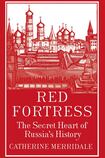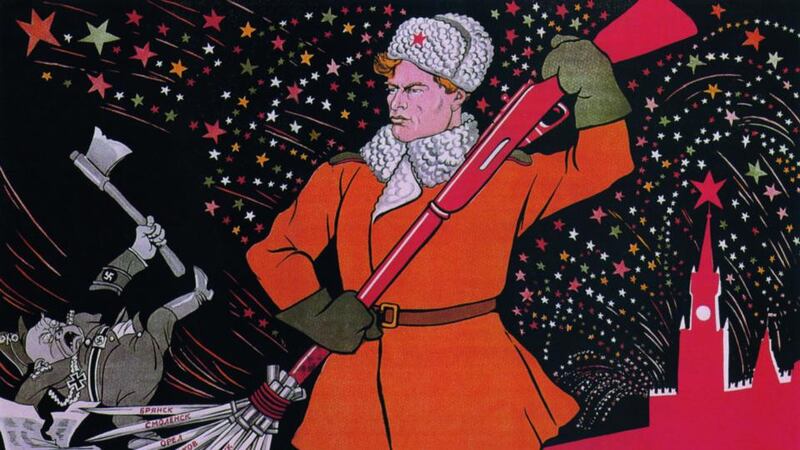
For all his brutality, Joseph Stalin was not delusional. He knew very well that "confessions" extracted from his enemies were only rarely true. (One victim, Stalin liked to joke, had been persuaded under torture that he was the author of Eugene Onegin). Unlike Hitler, however, Stalin did not see enemies everywhere; rather, he invented enemies because he needed them. Underlying his strategy of annihilation and persecution was the deeply rooted principle (inherited from Lenin) that enemies were more useful to Soviet power than friends.
Stalin’s power was concentrated in the Kremlin, that mighty symbol of Russian nationhood. And the power he wielded in the Kremlin was bolstered in turn by a network of spies. It was not difficult for Stalin’s spies to seek out enemies. By the dawn of the 1950s about 10 million informers were believed to be reporting directly or indirectly to the Kremlin. Information was gathered on anti-Soviet “wreckers” in every walk of life – name, address, profession – and set down in lapidary coldness in Kremlin communiques. Fearing guilt by association, Kremlin politicians distanced themselves from each other.
In Catherine Merridale’s razor-keen analysis, the arbitrariness and cruelty of tsarist authority found a grotesque mirror image in the Stalinist Kremlin. During the Great Terror of 1937-8, when an estimated two million Russian “enemies of the people” were shot or sent to the Gulag, the Kremlin seethed with jealousies and alcohol-fuelled vendettas. Violence had always been a part of Muscovite political life. Boris Godunov, the 16th-century Russian ruler made famous by the Mussorgsky opera, turned the Kremlin into a “pit of snakes” as he filled its corridors with paid informers. In his furs and gold finery, says Merridale, Godunov was puffed out with as much rank and self-importance as any 21st-century apparatchik.

In her superb history of the Kremlin, Red Fortress, Merridale chronicles the political hierarchies and shifting ideologies of Kremlin life from medieval times to the present. The origins of the Kremlin are lost in the mists of antiquity, she says, but some sort of fortified princely residence existed in Moscow at least since 1147, when the timber buildings would have exuded a "bucolic informality". Today the Moscow Kremlin is the best known of all the Russian kremlins, or citadels; it comprises five palaces and four cathedrals, as well as the encircling Kremlin Wall, with its towers, and a helipad built by President Putin (for his personal use) in May this year.
The Kremlin walls as they appear today were constructed between 1485 and 1495 by Ivan III, the grand duke of Muscovy. Architects were brought from Italy to design a Renaissance-style palace for Ivan, as well as the beautiful, golden-domed Dormition Cathedral, where all Russian tsars were subsequently to be crowned. (The last, in 1896, was the ill-fated Nicholas II).
In pages of lucid prose, Merridale highlights the Kremlin’s pre-eminence as both the religious and the political capital of the Russian world. Under the determinedly Slavophile Tsar Nicholas I, Moscow’s citadel came to symbolise the “new Byzantium, Third Rome and holy empire all in one”.
Nicholas became a sort of crusader figure during the 1854-6 Crimean War, moreover, when he vowed to drive the Muslims out of Europe and raise the flag of eastern Christian Orthodoxy over Constantinople. In the Kremlin it was bitterly resented that Britain had sided with Ottoman Turkey in the conflict and thus undermined Russia’s “holy cause”. In his ambition to revive the spirit of old Slavic Russia, Nicholas built for himself the vaguely Byzantine Grand Kremlin Palace. The palace has been unflatteringly compared to a Manchester cotton mill, but Moscow would be unimaginable without it today.
Moscow ecclesiastical doctrine is amply explored in Red Fortress. The city's most notorious 17th-century patriarch, the venal and vainglorious Nikon, was among the first to try to turn the Kremlin into an eastern version of the Vatican. He built himself 12 churches for the purpose, and sought to bring Orthodox ritual in line with Greek ritual. His church reforms made him many enemies, however, as medieval Russian ritual was held to be sacrosanct by the so-called Old Believers, who shut themselves in their prayer houses and burned themselves to death rather than submit to Nikon's new-style Orthodoxy. Hounded by Muscovite authorities, other Old Believers escaped to the shores of Lake Peipsi, in modern-day Estonia, where they have survived as an Amish-like people who cultivate (among other things) onions.
In her concluding chapter Merridale looks at the place of the Kremlin in Russian politics today. Vladimir Putin grew up in Leningrad (St Petersburg) in the early 1950s during the last days of the Stalin dictatorship, and he now has something of Stalin’s xenophobia towards the west. In his determination to champion the “Great Nation” of Russia, however, Putin represents the stability that many post-Soviet Russians crave. No sooner was he installed in the Kremlin in 2000 than he forced many dubious oligarchs into exile or prison. To seasoned Kremlinologists this looked like the work of a hardliner in democrat’s clothing. But the state is infinitely more important to Putin (as it was for Stalin) than individual liberty. Anything that threatens the power of the Kremlin, whether it be Pussy Riot or Chechen rebels, must be neutered. In some ways Putin continues a tradition of strong-arm nationalism that goes back at least to Tsar Nicholas I.
Catherine Merridale, one of the finest historians of Soviet Russia, has written a book that anyone interested in the machinations of Moscow state power should read. A marvel of analysis and diligent research, Red Fortress absorbs from start to finish.
Ian Thomson's The Dead Yard: Tales of Modern Jamaica won the Ondaatje Prize in 2010
